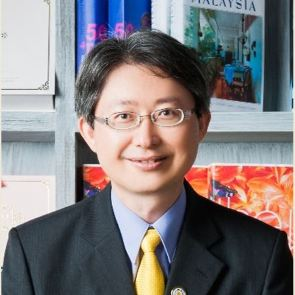Selected Papers from "3rd Asian Conference on Liquid Crystals, ACLC 2017"
A special issue of Crystals (ISSN 2073-4352).
Deadline for manuscript submissions: closed (31 May 2017) | Viewed by 48716
Special Issue Editor
Interests: liquid crystals; polymeric composites; colloids; photonic crystals; metamaterials; liquid-crystal-based biosensors
Special Issues, Collections and Topics in MDPI journals
Special Issue Information
Dear Colleagues,
On behalf of the Taiwan Liquid Crystal Society, we are pleased to welcome you to the third Asian Conference on Liquid Crystals (ACLC 2017) to be held at the National Cheng Kung University in Tainan, Taiwan, 13–15 February, 2017. (http://aclc2017.conf.tw/site/Page.aspx?pid=901&sid=1102&lang=en).
Following the first ACLC, held in Japan, and the second in Korea, the conference continuously aims to foster the growth of research in liquid crystal science and technology and its benefits to the community at large. We hope that ACLC 2017 will provide a great platform for academic and industry professionals to have fruitful discussions and to exchange new ideas of recent developments and latest advances in the interdisciplinary field. It is our pleasure to announce the supportive participation of leading academics and researchers, in their respective areas of focus, from various countries, not only in, but also beyond Asia. We invite you to participate in this conference by submitting a paper reflecting your current research and to excel in liquid-crystal-related R&D worldwide.
Participants of the conference are cordially invited to contribute original research papers or reviews to this Special Issue of Crystals.
Prof. Dr. Wei Lee
Guest Editor
Manuscript Submission Information
Manuscripts should be submitted online at www.mdpi.com by registering and logging in to this website. Once you are registered, click here to go to the submission form. Manuscripts can be submitted until the deadline. All submissions that pass pre-check are peer-reviewed. Accepted papers will be published continuously in the journal (as soon as accepted) and will be listed together on the special issue website. Research articles, review articles as well as short communications are invited. For planned papers, a title and short abstract (about 100 words) can be sent to the Editorial Office for announcement on this website.
Submitted manuscripts should not have been published previously, nor be under consideration for publication elsewhere (except conference proceedings papers). All manuscripts are thoroughly refereed through a single-blind peer-review process. A guide for authors and other relevant information for submission of manuscripts is available on the Instructions for Authors page. Crystals is an international peer-reviewed open access monthly journal published by MDPI.
Please visit the Instructions for Authors page before submitting a manuscript. The Article Processing Charge (APC) for publication in this open access journal is 2600 CHF (Swiss Francs). Submitted papers should be well formatted and use good English. Authors may use MDPI's English editing service prior to publication or during author revisions.
Keywords
- thermotropic liquid crystals
- lyotropic liquid crystals
- polymeric liquid crystals
- colloidal liquid crystals





